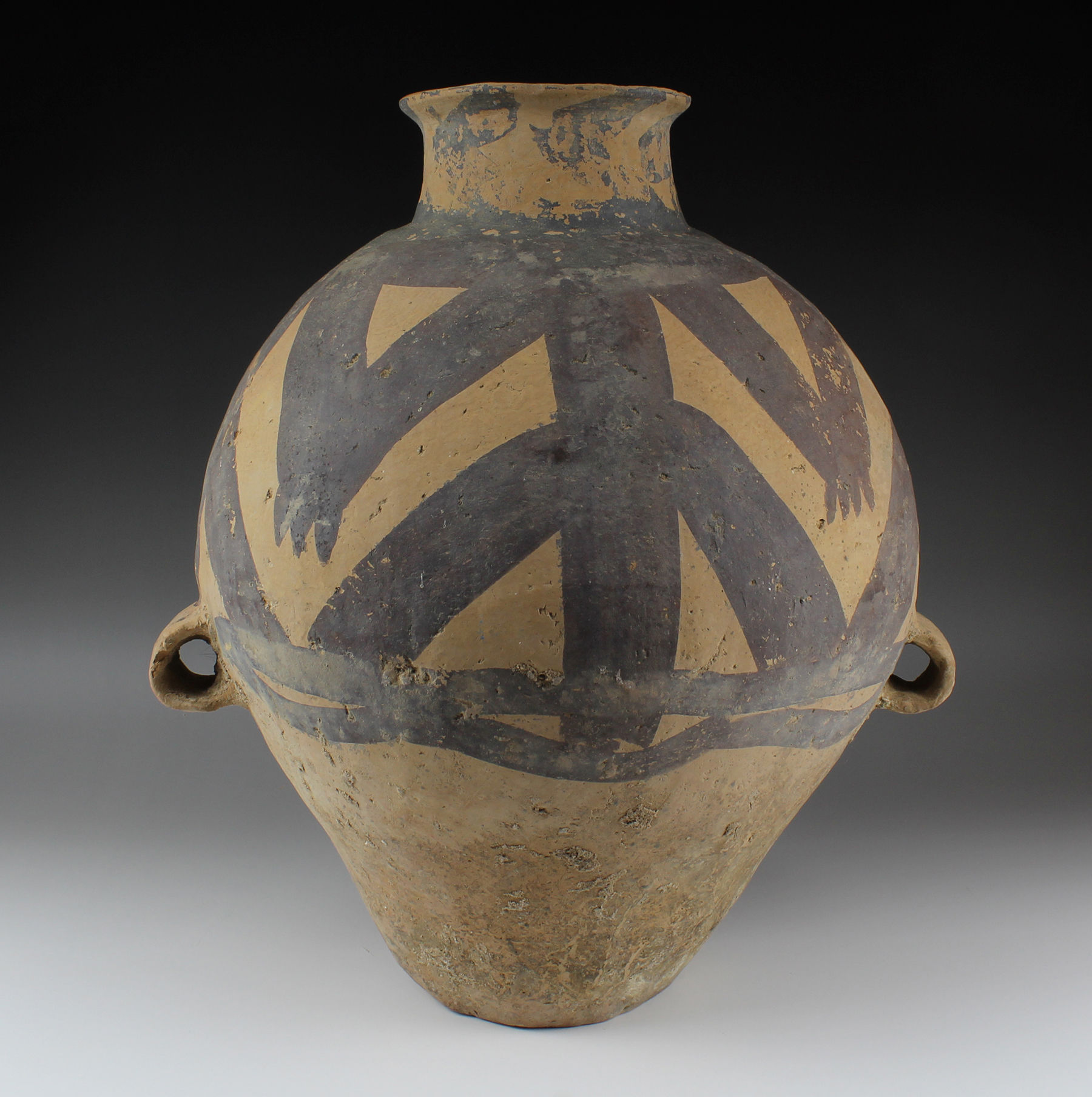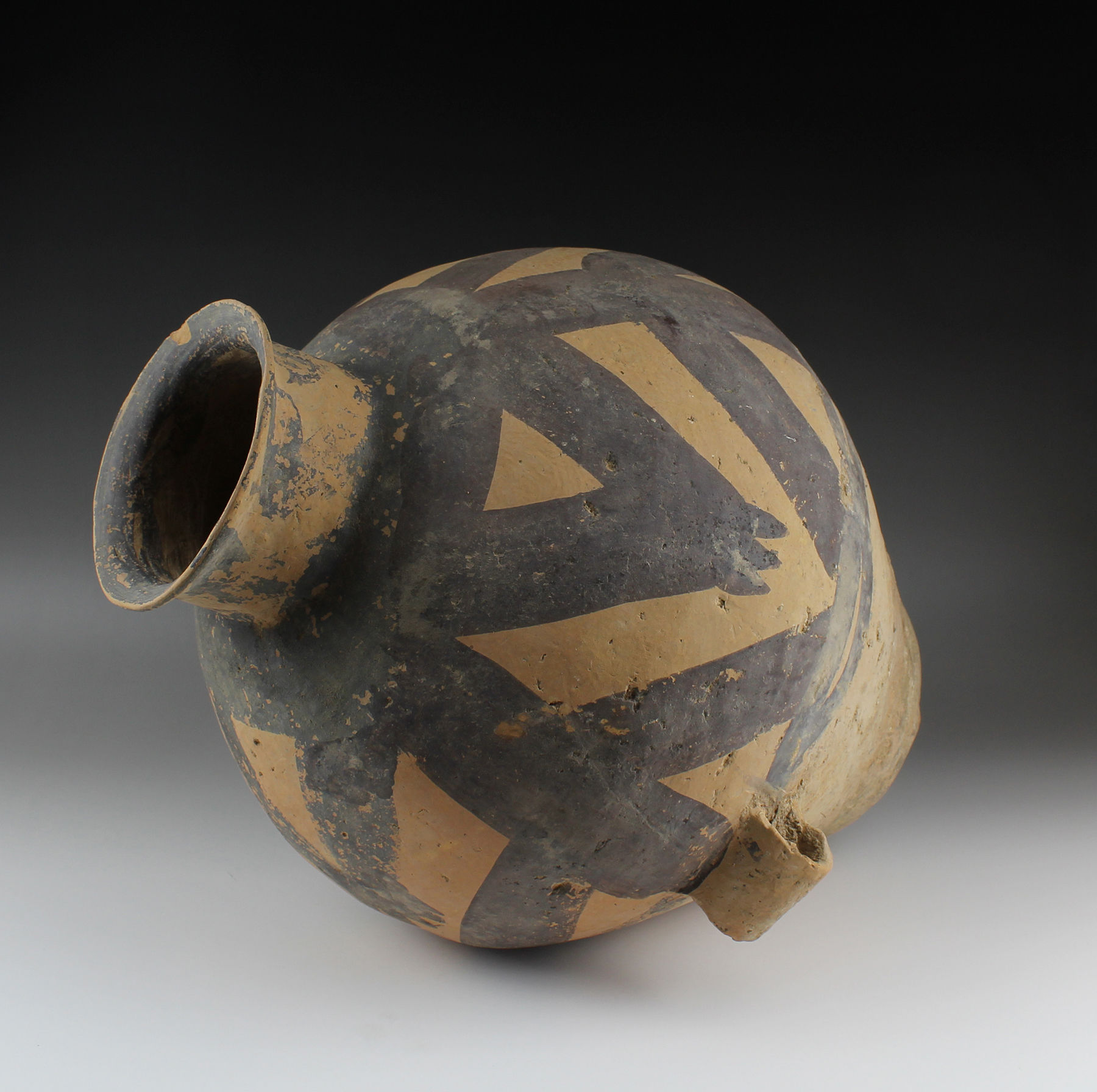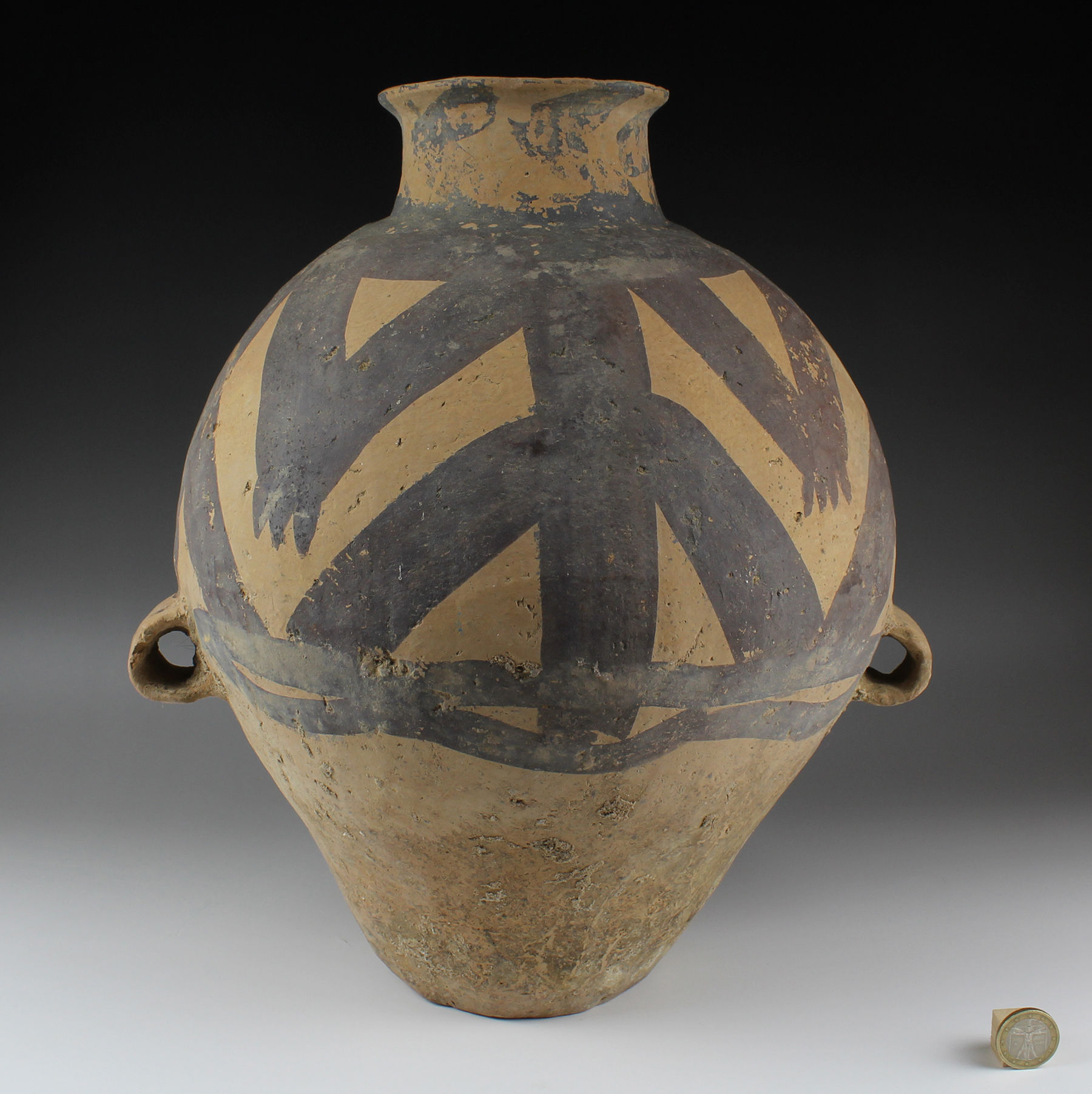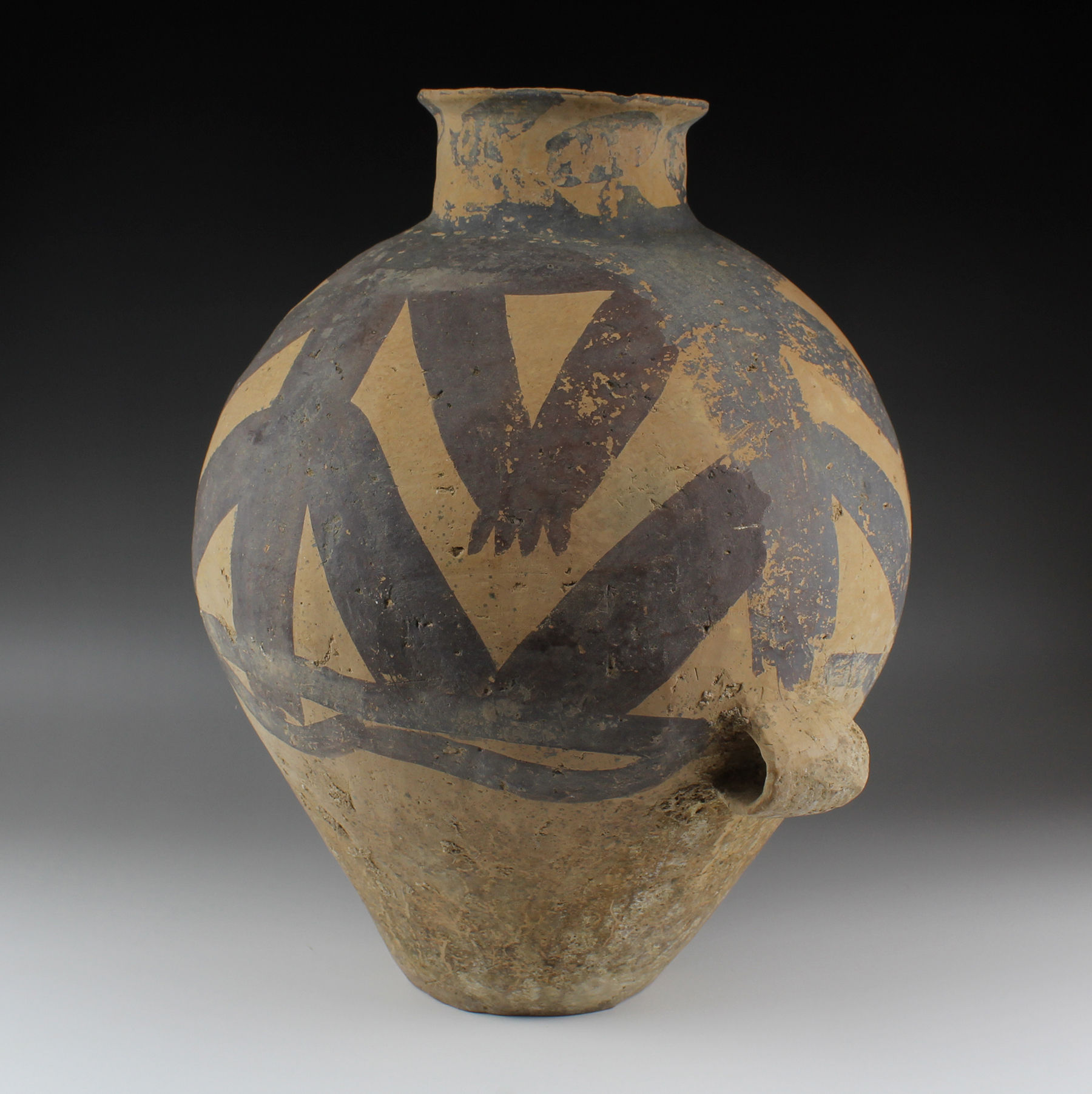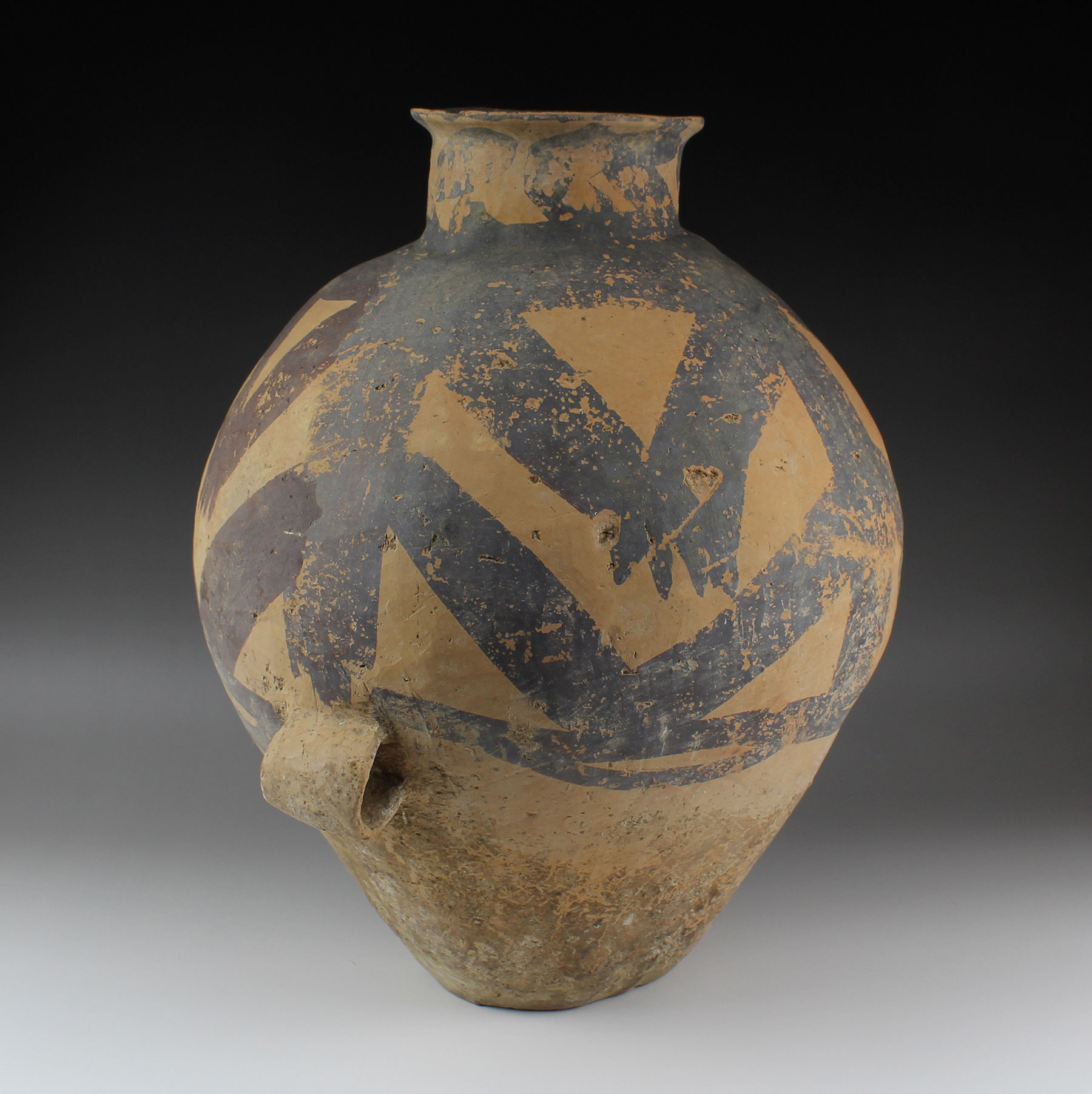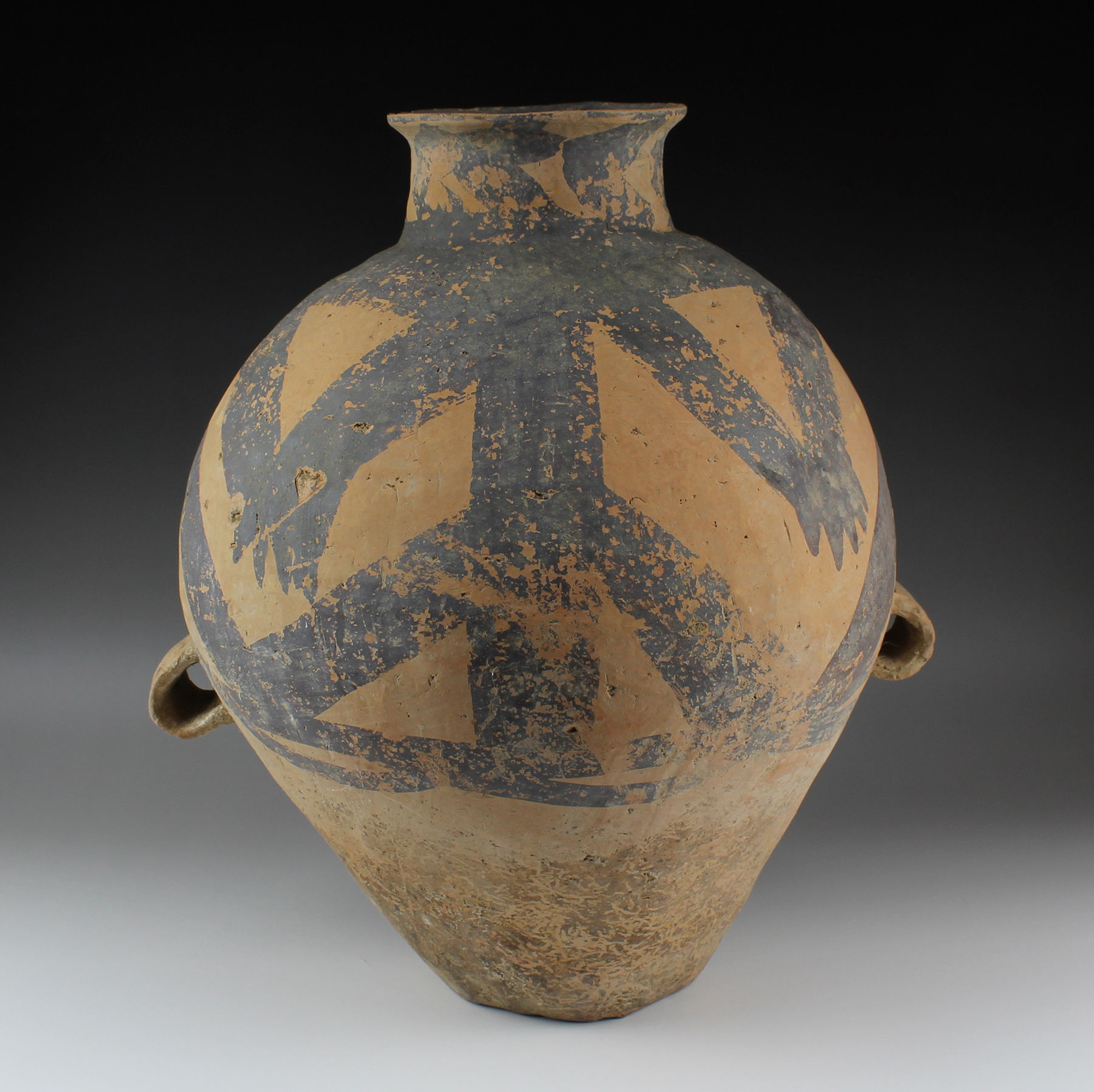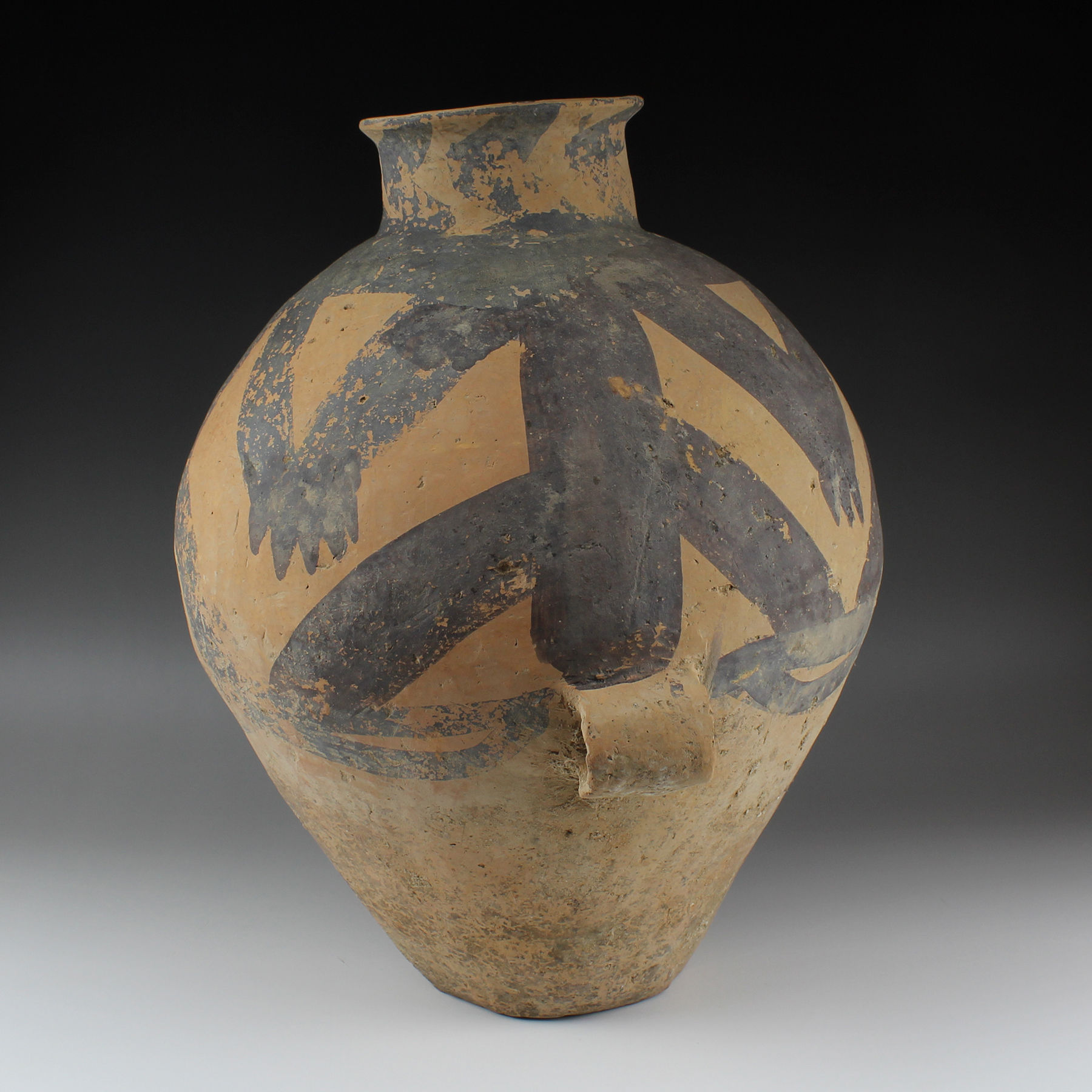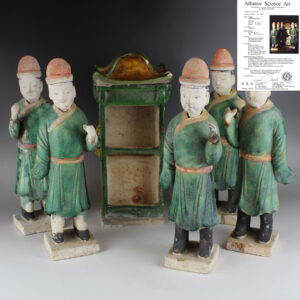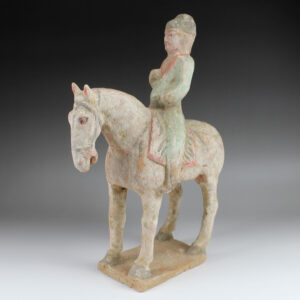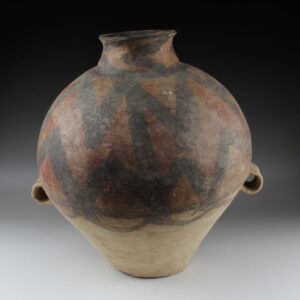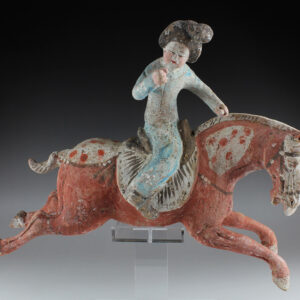Description
| ITEM | Decorated ovoid pot |
| MATERIAL | Pottery |
| CULTURE | Chinese, Neolithic |
| PERIOD | Majiayao, Machang period, 2300 – 1800 B.C |
| DIMENSIONS | 350 mm x 320 mm |
| CONDITION | Good condition |
| PROVENANCE | Ex English private collection, D.M, Bath, acquired between 1980 – 2000, previous from Hong Kong art market |
Majiayao phase (3300–2500 BC) sites are mostly found on terraces along: the upper Wei River valley; upper Bailong River valley; middle and lower Tao River and Daxia River valleys; upper Yellow River valley; the Huangshui River; and lower Datong River.
The most distinctive artifacts of the Majiayao culture are the painted pottery. During the Majiayao phase, potters decorated their wares with designs in black pigment featuring sweeping parallel lines and dots. Pottery of the Banshan phase is distinguished by curvilinear designs using both black and red paints. Machang-phase pottery is similar, but often not as carefully finished. Its development is associated with interaction between hunter-gatherers in the Qinghai region and the westward expansion of agricultural Yangshao people.
In contrast to plain pottery, the Majiayao painted pottery was produced at large, centralised workshops. The largest Neolithic workshop found in China is at Baidaogouping, Gansu. The manufacture of large amounts of painted pottery means there were professional craftspeople to produce it, which is taken to indicate increasing social complexity. Control over the production process and quality declined by the Banshan phase, potentially due to greater demand for pottery to use in funeral rituals, similar to what Hung Ling-yu calls the “modern Wal-Mart syndrome”.


